82 F. high Saturday in the Twin Cities.
84 F. average high on July 20.
87 F. high on July 20, 2012.
Trace of rain fell yesterday at MSP Internertional Airport.
T-storm risk today, better chance Monday.
Monday: hottest day of the week, highs near 90F, then cooling off Tuesday into Friday.
Respect
How did the pioneers do it? Last week I was
treated to a thunderous orchestral concerto of whines, gripes &
groans about the heat. "Really Paul? Can't you turn down the
thermostat?"
No, not really.
Many of us complain, even as we're darting from
one air conditioned space to the next. How did Minnesota's 19th century
pioneers do it? Before DEET, sunscreen, storm warnings and an electrical
grid capable of powering a simple table fan?
The settlers who weathered nature's dark side
without the modern comforts we often take for granted were a race of
super-heroes. Their tenacity & spirit still inspires to this day.
In spite of a chilly spring locally NOAA reports the first half of 2013 tied 2003 for the 7th warmest, globally, since 1880.
A sneeze of cooler, Canadian air has taken the
edge off the heat across Minnesota; this week should average 10F cooler
than last week. An airmass tug-of-war sparks showers & T-storms
today and Monday - generally quiet skies with highs near 80F Tuesday
into Friday. T-storms next Saturday should give way to a clearing trend
one week from today.
July is Minnesota's hottest month of the year, but we enjoy a siesta from the Dog Days this week.
Cooling Trend. With the exception of Monday, when
highs may approach 90F (if there's any sunshine at all) high
temperatures hold in the 70s to near 80F most of this week, a few
degrees cooler than average for late July. How is it already late July?
Risk Of A Quiet Week. After a hot, thundery Monday
another puff of Canadian air pushes south of the border, keeping us
comfortable and dry Tuesday into Friday. It's a little early to be
pondering next weekend, but the ECMWF model is hinting at numerous
showers and T-storms next Saturday, followed by a gusty cool front next
Sunday.
Taking The Edge Off The Heat. The 84-hour NAM model
shows another push of cooler, drier, less humid Canadian air reaching
the Great Lakes and New England by midweek, hot, steamy air lingering
from the Carolinas westward to Denver; no significant rain for the west
coast. Model animation: NOAA.
Monday Downpours? I'm not buying the 4km. NAM
solution (yet), which is predicting over 2" of rain between now and
Monday night. It doesn't look quite as wet today, but there will be a
risk of a passing shower or T-storm, enough sun for low 80s. As
70-degree dew point air surges into southern Minnesota Monday conditions
will be ripe for heavier T-storms, even a few severe storms. The
weather looks good for outdoor activities from Tuesday into Friday.
Hot Tips To Cool Pets When Summer Temperatures Soar. Among the suggestions offered in this timely Op-Ed from
LiveScience:
1). Never leave your pets in a parked car, 2). Watch the humidity, 3).
Limit exercise on hot days, 4). Don't rely on a fan, 5). Provide ample
shade and water, and 6). Cool your pet inside and out, and that's just a
few of the tips worth checking out. Yes, dogs, cats and horses feel the
heat as much as we do.
Road-Melting Heat. You think it was hot here? In
part of the United Kingdom it's so hot that roads are beginning to melt.
A Level 3 Heat Warning has been issued for much of England; details
from The BBC and
audioboo.fm.
No Air Conditioner? How To Keep Your Cool No Matter How Hot It Gets. I thought some of the reader suggestions at this post at
apartmenttherapy.com were on the money; here's an excerpt: "
Now
that the high temps have really kicked in, it's hard to remember that
this is the season everyone longs for during the darker, colder months
of the year. Ha! If your home doesn't have AC (or you are choosing to
leave it off as much as possible) you can feel stuck, especially when
it comes to getting a restful nights sleep. Thankfully our readers have
come to the rescue with a long list of tips ranging from from
absolutely quirky (but they swear they work!) to "why didn't I think of
that!?" good old common sense ideas . Bookmark this quick list of
possible solutions and get started on your a cooldown plan!
Freeze a 2 liter bottle with water. Put in a pillow case
and hold to your chest like a teddy. Cooling down the central core
will cool down all extremities as a result. My roomie calls them "ice
babies". - Novalis..."
Drought Update. For the first time since May, 2005 drought conditions are not showing up anywhere east of the Mississippi River. Map:
U.S. Drought Monitor.
7th Warmest Start To The Year On Record. In spite of
a persistently chilly spring over much of the USA, taking a step back
and looking at global temperature trends for 2013 tells a different
story.
Climate Central has the details: "
Global
temperature records are in for first half of the year, and they
indicate a planet with no intention of cooling off. On Thursday, the
National Oceanic and Atmospheric Administration released its analysis
for the period from January to June. They show that six-month span ties
with 2003 as the seventh warmest on record since 1880. Temperatures
averaged over both land and sea ran 1.06°F above the 20th century
average.
Some of the highlights include:
- The land temperature alone is the sixth warmest on record, running 1.80°F above average.
- The ocean temperature alone is seventh warmest, running 0.79°F above average.
- While this was the seventh-warmest start to the year,
some regions of the world experienced their warmest January-June on
record. These include parts of Eastern Europe, Southeast Asia and
Australia, which had to add a new color to its temperature map to account for the extreme heat.
- June marks the 340th consecutive month —
a total of more than 28 years — with a global temperature above the
20th century average. The last below-normal month was February 1985."
Graphic credit above: "
A map showing January-June temperatures across the globe." Credit: NOAA & Climate Central
Sequestration Could Curtail "Hurricane Hunter" Missions.
This would not be a good development. Meteorologists can only glean so
much from satellite imagery - there is a data-driven need to fly planes
into tropical storms and hurricanes, to get a better fix on position,
estimate strength, and future development. Bottom line: forecast
accuracy could be compromised, especially for large hurricanes
approaching landfall.
WWNO.org has the story; here's the intro: "
Federal
furloughs caused by sequestration could ground "Hurricane Hunter"
aircraft, depriving forecasters of real-time measurements of storms
during what's expected to be an especially active Atlantic hurricane
season. While NOAA operates some of the Hurricane Hunters, most of the
modified C-130s transports
that fly into storms to gather vital information on their position,
strength and direction are flown by the Air Force Reserve's 53rd Weather Reconnaissance Squadron. The unit is part of the larger 403rd Wing based in Biloxi, Miss. The Vice Commander of the 403rd, Col. Craig La Fave, told Miami TV affiliate WPLG that, "while NOAA is exempt of the furloughs, we are not..."
Photo credit: AP.
Do You Know About Problems With FEMA's Flood Mapping? ProPublica has the story - here's a clip: "
Homeowners
across the country are facing headaches over flooding, but not because
of water-damaged property or lack of insurance. They are being asked
to buy insurance they don’t need for houses built on high ground.
That’s because the Federal Emergency Management Agency has used outdated data in a number of its new flood maps
and mistakenly mapped homeowners into high-risk flood areas.
Homeowners in such areas with federally backed mortgages (and most
mortgages are) are required to buy insurance through the National Flood
Insurance Program. We’ve heard from homeowners such as Donna Edgar,
whose home in Texas was mapped into a high-risk flood area last year by
mistake. But we don’t know exactly how widespread the problem is.
That’s where you can help. If you think FEMA has mapped into a
high-risk flood area by mistake, please let us know by filling out the
form below..."
Geothermal Exploration Causes Earthquake in Switzerland. NDTV.com has the story; here's the intro: "
Geothermal
exploration was the likely cause of a 3.6 magnitude earthquake on
Saturday in northeastern Switzerland, authorities said. Further seismic
activity cannot be ruled out in the region in the coming days, the
seismology department of the Zurich Federal Polytechnic School (EPFZ)
said in a statement. Experts "manually" recorded Saturday's quake at
5:30 am (0330 GMT) at a depth of four kilometres (2.5 miles) near the
city of St Gallen. "The quake is probably directly linked to trials and
stimulation activities during the drilling involved in a geothermal
project at St Gallen, where several mini-quakes have already been
recorded in recent days," the EPFZ statement said..."
Before Air Conditioning. Yes, we feel it's our
birthright to whine about the heat, as most of us dart from one air
conditioned space to the next. How did our parents and grandparents get
by? This story from
The New Yorker gives us a glimpse; here's an excerpt: "...
My
first direct contact with an air-conditioner came only in the sixties,
when I was living in the Chelsea Hotel. The so-called management sent
up a machine on casters which rather aimlessly cooled and sometimes
heated the air, relying, as it did, on pitchers of water that one had
to pour into it. On the initial filling, it would spray water all over
the room, so one had to face it toward the bathroom rather than the
bed. A South African gentleman once told me that New York in August was
hotter than any place he knew in Africa, yet people here dressed for a
northern city. He had wanted to wear shorts but feared that he would be
arrested for indecent exposure."
Photo credit:
verydemotivational.com.
Will Nissan's Next Electric Car Finally Challenge Tesla?
The success of Tesla with their (amazing) Model S is spurring other
competitors to step up and offer luxurious cars that are carbon-free.
Here's an excerpt from
Daily Finance: "
We've been hearing for a while that Nissan
is planning an all-electric luxury car to be sold under the Infiniti
brand. It's expected to look a lot like the Infiniti LE concept car,
shown above, which the company first unveiled last year. Many have
speculated that this could be the first direct competitor to Tesla Motors'
hot Model S sedan, coming from the company that had the first
successful mass-market electric car with its Nissan Leaf. But more
recently, Nissan has said that the program could be delayed, hinting
that other (non-electric) new models might take precedence..."
New York Man Just Going To Stick An Entire Air Conditioner In His Car Window. Hey, why not? If you're hot enough you'll try anything. Details from
New York Magazine: "
Courtesy of our friends at the Lo-Down,
here's a photo of an SUV, on Pitt Street in the Lower East Side, with a
standard window air conditioner unit in a back window (à la Mayor Bloomberg,
except it's not stationary). Maybe the car's A/C is broken, or maybe
this guy just likes being really, really cold. Either way, if you were
already afraid of air conditioners falling from the sky — and you should be — now you have to worry about them hurtling out of speeding cars as well. Flying air conditioners are our Sharknado."
TODAY: Unsettled with a few hours of showers & T-storms. Dew point: 66. Winds: SE 10. High: 77
SUNDAY NIGHT: Lingering shower, possible thunder. Low: 66
MONDAY: Some sun, sticky and warmer. A few strong T-storms. Dew point: 71. High: 89
TUESDAY: Intervals of sun, drier and less humid. Dew point: 64. Wake-up: 64. High: 80
WEDNESDAY: Plenty of sun, pleasantly warm. Wake-up: 64. High: 82
THURSDAY: Clouds increase, lukewarm. Wake-up: 65. High: 81
FRIDAY: Partly sunny, seasonably warm. Wake-up: 65. High: 82
SATURDAY: Showers & T-storms likely. Wake-up: 67. High: 79
* photo above: Brownsville National Weather Service.
Climate Stories....
Are The East Coast Heat Waves Related To Global Warming? A warmer, wetter atmosphere is flavoring all weather now.
LiveScience.com takes a look - here's a clip: "...
however,
a combination of rain and heat leads to high humidity, which is being
seen in many place currently. And humidity can lead to higher nighttime
temperatures, which are a major factor in deaths from heat, said Jeff
Weber, a scientist with the University Corporation for Atmospheric
Research in Boulder, Colo. Hot nights don't allow people to cool down
and get some relief, Weber said. As the Earth continues to warm, heat
waves are tending to last longer, Weber told LiveScience. The jet
stream, which generally ferries weather patterns from west to east
across North America, is driven by a difference in temperature between
the cold Arctic and warmer equator. Polar regions are heating faster
than the equator is, which is leading to a weaker jet stream, Weber
said. That means weather systems, like high pressure systems with high
temperatures, tend to stay in place longer, he added."
Photo credit above: "
A crossing guard tries to cool off with a
bottle of water while working on a sweltering street in New York's
Chinatown, Friday, July 19, 2013. A punishing heat wave continues to
scorch New York, threatening to break heat records and putting a huge
strain on the state’s overworked power grid." (AP Photo/Jon Gerberg)
The Climate Change Real Estate Boom Is Coming. I'm
no futurist, but I strongly believe that Minnesota and the Twin Citiies
will benefit from warming temperatures, as will many northern cities and
southern Canada. Others envision a real estate boom for many northern
cities, well away from rising seas, persistent heat waves, wildfires and
water shortages plaguing much of the south. Here's a clip of an
interesting story at
fastcoexist.com: "
Fabulously wealthy British futurist James Martin spoke about climate change at New York’s Lincoln Center and how it will change global population patterns in one of his last public appearances before passing away
on June 30 at 79 years of age. Martin, who donated more than $150
million to Oxford University and lived on his own private Bermudan
island, believed one of the biggest land booms in history is on its
way--and it will happen in less than 100 years. At the June 15 Global Future 2045
conference, Martin explained that events like Superstorm Sandy and
Hurricane Katrina will hit major American cities harder and more
frequently because of climate change. Scientists and politicians have
even come to the conclusion that whole countries such as Mauritius and Tuvalu
will need to evacuate due to rising sea levels. But while coastlines
in much of the world may suffer, climate change will be a positive
development in some areas. Specifically, Canada; northern Europe;
Russia; Alaska; Patagonia, Argentina; and southern Africa may all
experience real estate booms. These booms, he claimed, will be in
“Climate Change Cities” with military fortifications catering to an
increasingly displaced global elite..."
Like Butter: Study Explains Surprising Acceleration Of Inland Ice.
Think Progress has the story - here's the intro: "
In 2011, scientists explained that the Greenland Ice Sheet “could undergo a self-amplifying cycle of melting and warming” that is “difficult to halt.” Last November, a major international study
in the journal Science found that the Greenland ice sheet’s melt rate
was up nearly 5-fold since the mid-1990s. This acceleration has put ice
sheet loss far ahead of what most climate models had predicted several
years ago. Now a new study by scientists at the Cooperative Institute
for Research in Environmental Sciences (CIRES) in the Journal of
Geophysical Research: Earth Surface explains at least one key factor the
models have missed:
Surface meltwater draining through cracks in an ice sheet can warm the sheet from the inside, softening the ice and letting it flow faster..."
Photo credit above: "
Meltwater from the surface of the
Sermeq Avannarleq Glacier drains down toward interior ice. This
photograph depicts a region about 10 miles from the ice sheet margin in
Southwest Greenland. A new CIRES-led study helps explain the
surprising acceleration of inland ice. Meltwater draining through the
ice likely warms the ice sheet from the inside and like a stick of warm
butter, the sheet softens, deforms and can flow faster." Photo: CIRES.
Here's An Easy Way To Protect Coastal Communities From Rising Seas And Storms.
Grist has the story - here's an excerpt: "...
Led by Stanford University’s Natural Capital Project,
researchers mapped the intensity of hazards posed to communities
living along America’s coastlines from rising seas and ferocious storms
now and in the decades to come. They examined the hazards those
communities would face in the year 2100 with and without the coastal
habitats left intact. Here is what they found:
Habitat loss would double the extent of coastline highly exposed
to storms and sea-level rise, making an additional 1.4 million people
now living within 1 km of the coast vulnerable. The number of poor
families, elderly people and total property value highly exposed to
hazards would also double if protective habitats were lost..."
Image credit: Dan Anderson, EPA.
This Is What Fracking Really Looks Like. All those
feel-good commercials on TV from energy companies extolling the virtues
of oil and natural gas? There's another side to this story.
Slate has the story (and photos) - definitely worth a look. Here's a clip from the article: "
Photographer Nina Berman
had just started focusing on climate and environmental issues when she
read an article about fracking and its connection to the possible
contamination of New York City’s drinking water. Berman resides in New
York and knew very little about how the controversial process of
drilling for natural gas via hydraulic fracturing worked and decided to
head to Pennsylvania for Gov. Thomas Corbett’s inauguration in 2011. “I
knew there would be demonstrators (opposed to his support of natural
gas drilling), and I wanted to learn what they were screaming about,”
Berman said. After researching the issues, she then had to figure out
how to document them in a visual way. “It’s a very hard subject to
photograph,” Berman explained. “You see a drill, and you don’t know
what that means, and then it disappears. What does that mean? It took
me a while to figure out how to approach it...”
Photo credit above: "
Jodie Simons demonstrates how her
sink water, full of methane, lights on fire. Simons' household's water
was pristine before gas drilling started, but now they've been without
clean drinking or bathing water for months." Nina Berman/NOOR.
Koch-Funded Climate Contrarians Make Mischief On Capitol Hill.
Huffington Post has an update; here's an excerpt: "
With
Congress about to head out of town for its summer recess, a
Washington-based think tank is ramping up a campaign to foil any
attempts to institute a tax on carbon emissions, The Hill, a Washington
political trade publication, reported
this week. "We're hoping to put the final nail in the coffin of the
carbon tax," said Benjamin Cole, the communications director for the
Institute for Energy Research (IER) and its advocacy arm, the American
Energy Alliance (AEA). "The proposal should be dead on arrival by the
time lawmakers come back from August recess." IER's campaign includes a
survey of American attitudes about such a tax and a $120,000 to
$150,000 radio ad buy targeting a handful of House members who,
according to Cole, "are soft on the carbon tax issue..."
Photo credit above: "
Robert P. Murphy, an economist with
the Koch-funded Institute for Energy Research, essentially told a
Senate committee yesterday that carbon emissions are harmless."
Cities Taking Initiative On Climate Change Preparedness.
Minneapolis and St. Paul are two of the cities not waiting for
Washington D.C. to take action on climate change. Here's an excerpt of a
story at
Climate Science Watch: "...
So,
while the ability to adapt to global climatic disruption will be
limited, and while preparedness can't substitute for a radical
transformation to a sustainable energy system, I think these are good
developments:
However, a combination of rain and heat leads to high humidity,
which is being seen in many places currently. And humidity can lead to
higher nighttime temperatures, which are a major factor in deaths from
heat, said Jeff Weber, a scientist with the University Corporation for
Atmospheric Research in Boulder, Colo.
Hot nights don't allow people to cool down and get some relief, Weber said.
As the Earth continues to warm, heat waves are tending to last longer, Weber told LiveScience. The
jet stream,
which generally ferries weather patterns from west to east across
North America, is driven by a difference in temperature between the
cold Arctic and warm equator. Polar regions are heating faster than the
equator is, which is leading to a weaker jet stream, Weber said.
That means weather systems, like high-pressure systems with high temperatures, tend to stay in place longer, he added.
- See more at: http://www.livescience.com/38315-heat-waves-global-warming.html#sthash.GKiAGaxH.dpu
Cities Taking Initiative On Climate Change Preparedness.
Minneapolis and St. Paul are two of the cities not waiting for
Washington D.C. to take action on climate change. Here's an excerpt of a
story at
Climate Science Watch: "...
So,
while the ability to adapt to global climatic disruption will be
limited, and while preparedness can't substitute for a radical
transformation to a sustainable energy system, I think these are good
developments:
45 Top Mayors Pledge Action on Extreme Weather, Launch National Resilience Campaign
Mayors of Washington DC, Denver,
Cincinnati, Sacramento, San Diego, Milwaukee, El Paso, Broward County
and others—commit to creating more resilient cities and counties in
response to nation’s growing extreme weather, climate and energy
challenges; call for greater federal support
[Washington DC, June 17, 2013] –
Forty five leading local elected officials today committed to creating
more resilient cities, towns, and counties in the face of unprecedented
extreme weather and energy challenges that threaten communities across
the country. The “Inaugural Signatories” of the Resilient Communities for America Agreement
letter pledged to take cost-effective actions to prepare and protect
their communities from the increasing disasters and disruptions fueled
by climate change, such as heat waves, floods, droughts, severe storms,
and wildfires. In addition, they called for more action and support
from federal leaders..."

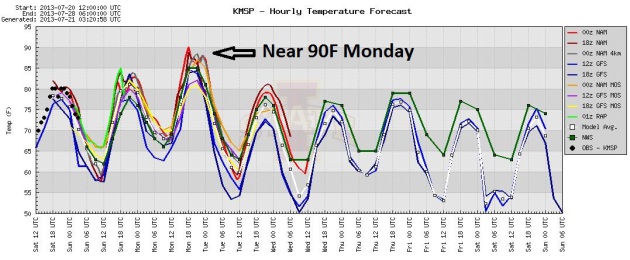

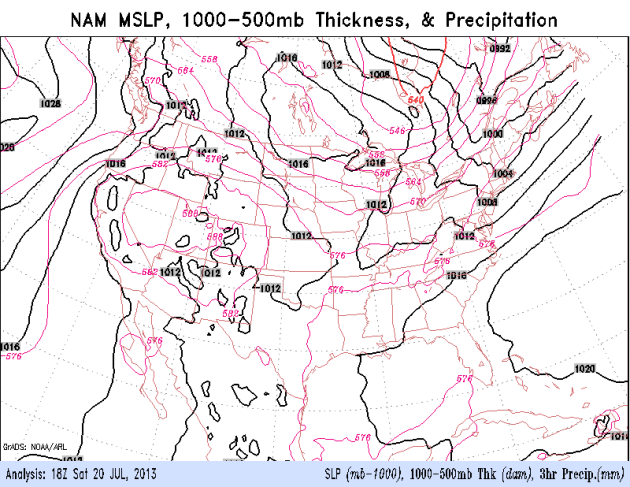
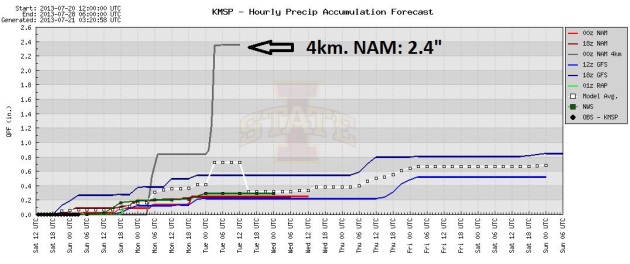

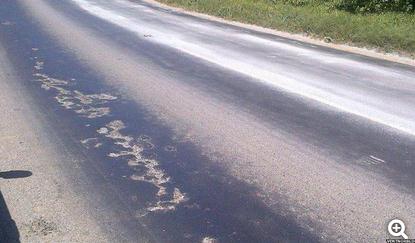



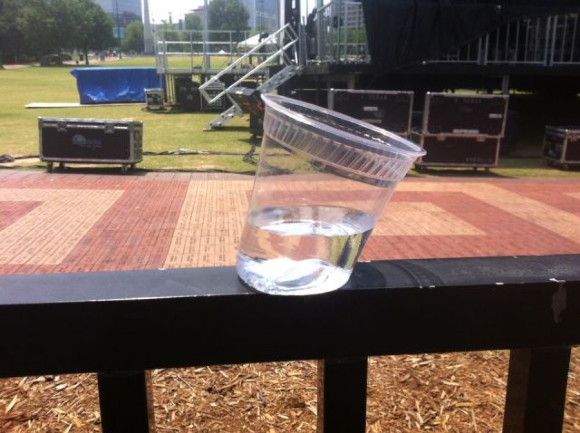

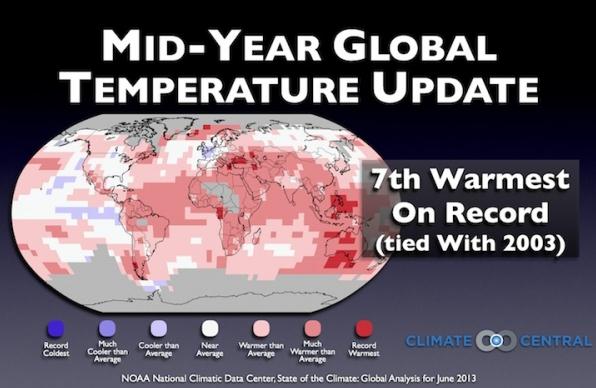








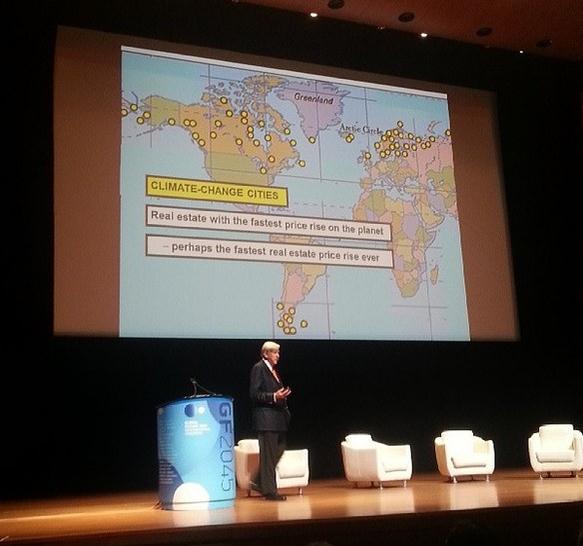

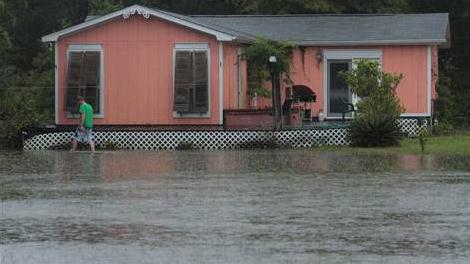



No comments:
Post a Comment